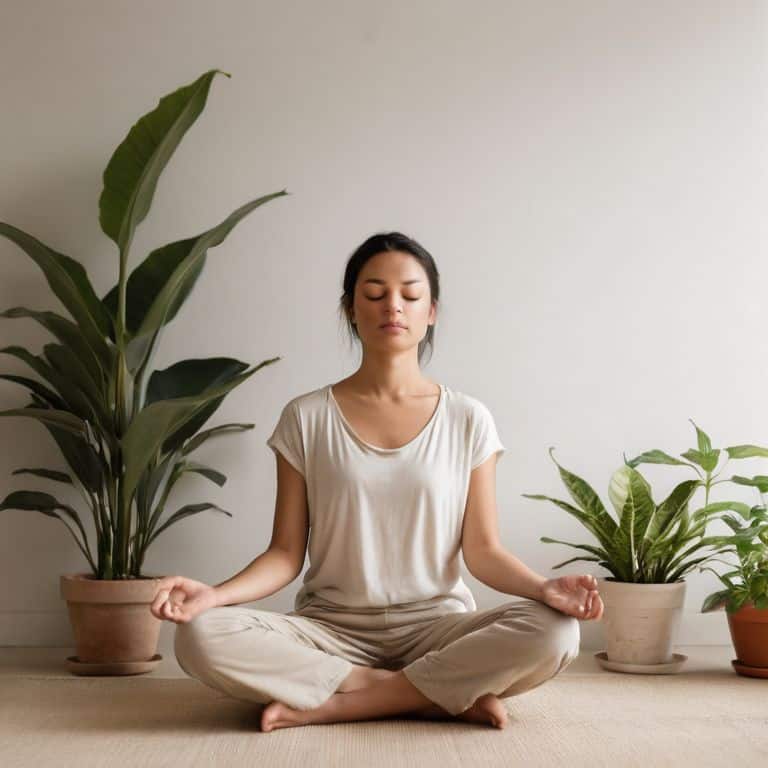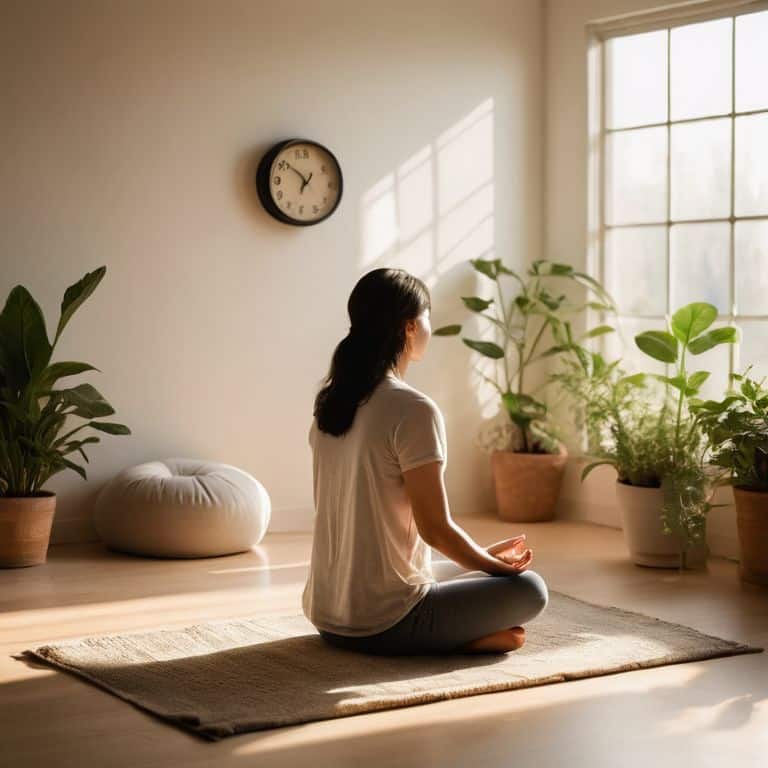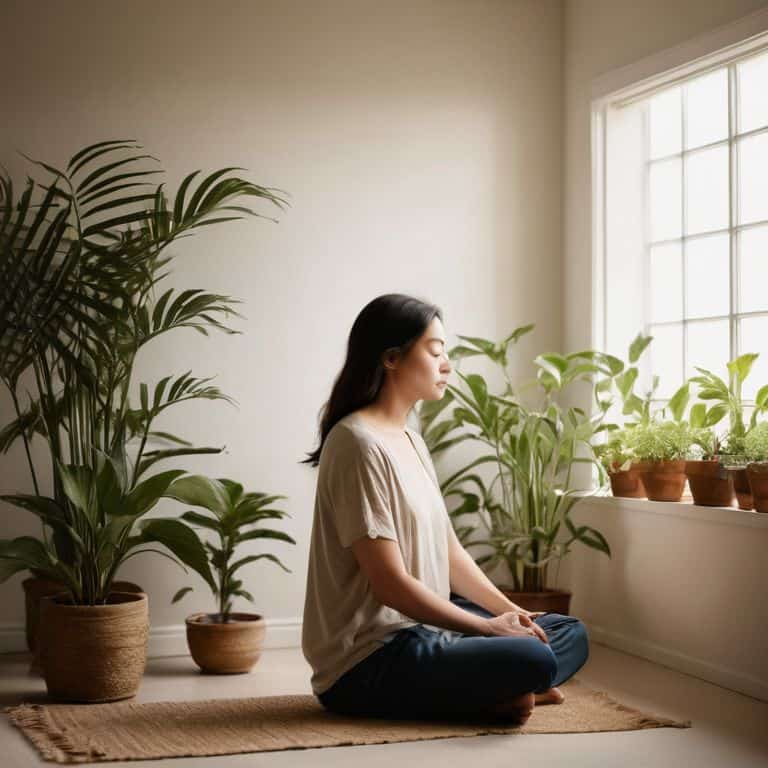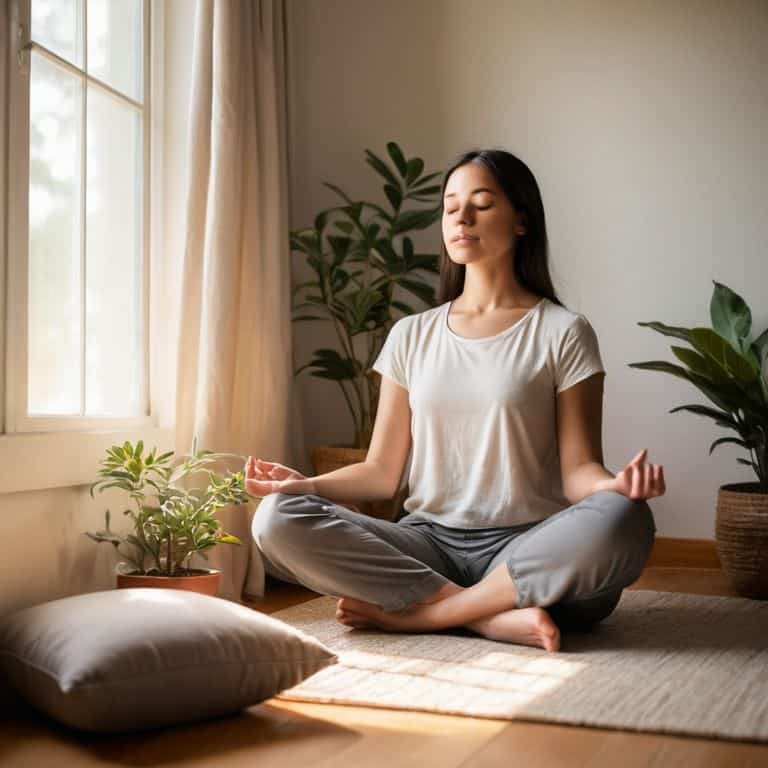To begin, take a deep breath in, and as you exhale, allow your attention to settle into the present moment. I still remember when I first started exploring meditation – I was overwhelmed by the idea that I needed to sit for hours to achieve any real benefits, wondering how long should you meditate for to actually make a difference. It seemed like every expert had a different opinion, and the more I read, the more confused I became. The notion that meditation had to be a lengthy, elaborate practice was not only intimidating but also incredibly discouraging.
As someone who’s walked this path, I want to assure you that the real power of meditation lies not in the duration, but in the quality of your attention. In this article, I’ll share my personal experiences and offer practical guidance on how to make meditation a sustainable, enjoyable part of your daily routine, cutting through the noise to answer the question of how long should you meditate for in a way that feels authentic and achievable for you. My goal is to empower you with the knowledge that even small moments of mindfulness can be profoundly transformative, allowing you to find a sense of inner peace and clarity that stays with you long after your meditation practice is over.
Table of Contents
Finding Inner Stillness Daily

To find inner stillness daily, I recommend starting with short, manageable sessions. Even just a few minutes of meditation each day can be incredibly beneficial for reducing stress and increasing focus. As you begin your meditation journey, consider using meditation apps to track your progress and stay motivated.
As you commit to daily meditation, you’ll start to notice the benefits of daily meditation in your everyday life. Your mind will feel clearer, and you’ll be better equipped to handle stressful situations. For beginners, I suggest trying simple mindfulness exercises, such as focusing on your breath or a calming phrase. This will help you cultivate a sense of inner peace and set you up for success in your meditation practice.
Remember, the goal of meditation isn’t to achieve a specific state, but to increase your awareness of the present moment. By incorporating meditation into your daily routine, you may even find that your meditation and sleep quality improve, leading to a more restful and rejuvenating sleep. As you continue on your meditation journey, consider starting a meditation journal to reflect on your progress and gain a deeper understanding of your mind and body.
Meditation for Stress Relief Benefits
As I sit in stillness, I’m reminded that meditation is a powerful tool for stress relief. By dedicating a few moments each day to quiet reflection, we can begin to unwind and find calm in the midst of chaos.
In my experience, the benefits of meditation for stress relief are numerous, and can be felt even after just a few short sessions. By focusing on the breath, we can learn to let go of tension and anxiety, and find a sense of peace that stays with us long after our meditation practice has ended.
Mindfulness Exercises for Beginners Start
To begin, take a deep breath in, and as you exhale, allow your attention to gently focus on the present moment. As a mindfulness teacher, I’ve found that starting small is key for those new to meditation.
For mindfulness exercises to truly take root, practice patience with yourself as you explore various techniques, and remember that every moment of breath is an opportunity to cultivate inner peace.
How Long Should You Meditate for

To find the perfect balance, start small. Even just a few minutes a day can be a great way to begin your meditation journey. I’ve found that short, consistent sessions can be more beneficial than trying to meditate for a long time once a week. As you get into the habit, you can gradually increase the duration. Remember, the goal is to make meditation a sustainable part of your daily routine, like brushing your teeth or taking a shower.
As you explore the benefits of daily meditation, you’ll notice improvements in your overall well-being. Meditation can help with stress relief, allowing you to approach challenges with a clearer mind. By incorporating mindfulness exercises into your daily routine, you’ll become more aware of your thoughts and emotions, making it easier to manage stress. You can use meditation apps to track your progress and stay motivated.
When it comes to finding the right amount of time for meditation, listen to your body. If you’re just starting out, try committing to 5-10 minutes a day. As you become more comfortable with the practice, you can increase the time to 20-30 minutes. Don’t forget to keep track of your progress in a meditation journal, noting how you feel before and after each session. This will help you identify patterns and make adjustments to your routine, ultimately improving your meditation and sleep quality.
Increasing Focus With Daily Meditation Apps
To cultivate a consistent meditation practice, I recommend exploring mindful moments throughout your day. This can be as simple as taking a few deep breaths while waiting in line or pausing to notice the sensation of your feet on the ground. By incorporating these brief moments of mindfulness, you can begin to shift your focus towards the present.
Using daily meditation apps can be a great way to stay on track and committed to your practice. These apps often offer guided meditations and reminders to help you establish a consistent routine, allowing you to settle into a sense of calm and clarity.
Meditation and Sleep Quality Improved
To cultivate a deeper sense of rest, let’s start by taking a slow, gentle breath in, and exhaling slowly. As we explore the connection between meditation and sleep, we find that regular mindfulness practice can calm the mind and body, preparing us for a restful night’s sleep.
By incorporating meditation into our daily routine, we can improve the quality of our sleep, and in turn, enhance our overall well-being. Mindful breathing becomes an anchor, helping us let go of the day’s stresses and slip into a peaceful slumber, feeling more grounded and refreshed for the next day.
Finding Your Rhythm: 5 Tips for Determining Your Ideal Meditation Time
- Start small, with just 5-10 minutes a day, and notice how your body and mind respond to the stillness
- Listen to your inner voice – if you’re feeling restless, try shorter sessions, and if you’re feeling calm, you can gradually increase the time
- Remember, it’s not about the duration, but the consistency – aim to meditate at the same time every day, even if it’s just for a few minutes
- Pay attention to your breath, and when you feel your mind wandering, gently bring your focus back to the present moment – this will help you stay grounded and aware
- Experiment with different meditation techniques, such as body scan, loving-kindness, or transcendental meditation, to find what works best for you and your schedule
Key Takeaways for Finding Inner Stillness
Start small: even just a few minutes of meditation a day can be a game-changer for finding inner calm and reducing stress
Consistency is key: incorporating daily mindfulness exercises, such as silent walking or nature photography, can help increase focus and improve sleep quality
Listen to your breath: remember that your breath is always available as an anchor to the present moment, and gently returning to it can help you find stillness amidst chaos
A Gentle Reminder
The length of your meditation isn’t as important as the depth of your breath, for it’s in the simplicity of a single inhale that we find the doorway to inner stillness.
Elara Keane
Embracing the Journey of Mindfulness

As we’ve explored the question of how long to meditate, I hope you’ve begun to see that the true power of mindfulness lies not in the duration, but in the consistent practice. Whether you’re sitting in stillness for a few minutes each day or simply taking a few deep breaths, the goal is to cultivate a sense of inner peace that can stay with you throughout your day. We’ve discussed the benefits of meditation for stress relief, the importance of starting small with mindfulness exercises, and how even short periods of meditation can improve focus and sleep quality.
As you close this article and return to your daily life, I invite you to remember that mindfulness is a journey, not a destination. It’s the gentle moments of awareness, the soft breaths, and the quiet reflections that can bring profound change to your life. May you find peace in the stillness, and may that peace stay with you, guiding you through life’s joys and challenges, one breath at a time.
Frequently Asked Questions
What is the minimum amount of time I need to meditate each day to see real benefits?
To see real benefits, even just 5-10 minutes of meditation a day can be transformative. Start with one minute, if that’s all you have – simply focus on your breath, and let go of expectations. As you cultivate this daily habit, you’ll begin to notice subtle shifts in your mind and body, and you can always add more time as you become more comfortable with the practice.
How do I know if I'm meditating for too long and should take a break?
Take a deep breath in, and as you exhale, notice your body’s signals. If your mind starts to wander excessively or your physical discomfort grows, it might be time for a break. Trust your inner wisdom, and gently open your eyes – you can always return to your meditation, refreshed and renewed.
Can meditating for just a few minutes a day really be as effective as longer sessions?
Take a deep breath in, and as you exhale, allow your doubts to gently release. Yes, even a few minutes of meditation a day can be incredibly effective, as it’s about consistency and presence, not just duration. I’ve seen it in my own practice and with my students – small moments of mindfulness can add up to make a big difference.
